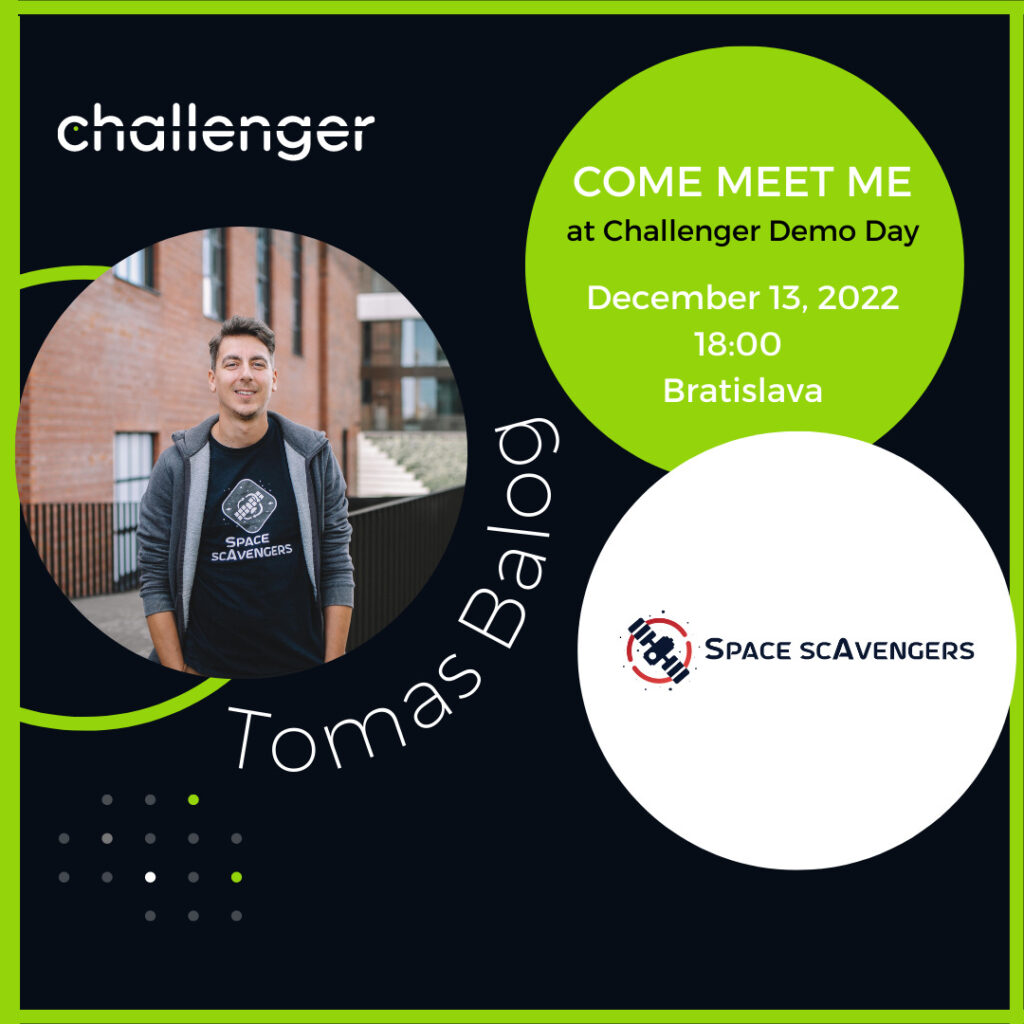Hello Space!
In previous blogs we’ve discussed our journey, our steep start and we gave you a brief description of the space debris problematics. As many starting companies we have also gone through multiple transformations as the journey is never straightforward. For us there were three main changes during the last two years where we had to reconsider our focus and establish ourselves as capable of transformation when market asks.
As mentioned in previous blogs our starting point was to focus on recycling in Earth’s orbit using junk that is available there. But quickly we’ve realised that such a goal is really long term and without having a considerable amount of financial background we would not be able to develop needed technology. As a starting company, of course, we did not have such a financial reserve and with respect to the length of company existence we were not investible.
Thankfully, after discussion with experts from ESA we made our first and possibly the most important transformation. We’ve started to focus on a bit of a different market within In-orbit servicing – the Active Debris Removal. Keeping in mind advancements we wanted to bring to space technologies such as autonomous functionality, AI, scalability and modularity. The change went from production and build of the recycling station in orbit to development of the multi-agent technology which would cooperatively connect to the chosen debris and move it to another orbit or bring it to the atmosphere to burn. This approach is still valid for us and is the foundation of our work. With concept like this we are having a significant market advantage against our competitors.

For the next months we worked on grant proposals for ESA and Horizon Europe and both of them continued in advancement of this idea. The making went in two parallel paths – hardware and software development. We knew that creation of this new technology requires not only creation of the agents themselves but we have to work on the simulator which will test our approach and will create the foundation for the control algorithms of those autonomous agents.
With such focus we continued our work up until negotiation of the approved SK PECS 07 proposal with ESA. Since the technological part also requires development of the connection mechanism of the agents to the non-working satellite or other type of debris, the ESA made stipulation that this connection mechanism can be used also for other services in space and the approach does not have to be limited to the active debris removal market.
This has actually widened our market, changed our presentation with respect to the world but nevertheless our main focus and go-to market strategy at that moment stayed the same – we start with active debris removal and in case of success we will bring enabling technology also for other autonomous services in space. As it can be seen, this transformation was rather minor but it has changed how we are seen in the eyes of investors and changed how we described ourselves. Even so, the investors were still rather careful and we were still too early to invest.
(Up to now) the last transformation occurred during our presence in CIVITTA Challenger Accelerator. Thanks to multiple discussions with mentors, presentations of our pitch deck to the experts in investment, we have realised that the main troublesome point in the eyes of investors is the time of technology development. This means that the first revenue is expected in a time-period which is far too long. Looking at our work in the past and parallelization we’ve made with respect to software and hardware development it has been noticed that our simulator (which we have to create either way) can be our first product for anybody who wants to develop technology or create missions in space related to the connection of two bodies, autonomous functionality and coordinated formation flying of multiple objects.
Thus, software development became the dominant part of our work for upcoming months which will lead to first short-term revenues and will hopefully change the view of potential investors on us and our company.
Of course the technological part of the development continues but in that case we are (in addition) awaiting the result of the Horizon Europe proposal submitted with our partners in spring 2023.
Last but not least change in our lives with respect to the project and company came in April 2023. We’ve been contacted by Slovenska Sporitelna bank which offered to give us a bridging loan covered by finances from the ESA PECS 06 grant. That allowed us to leave our daily jobs and for about one year cover the salaries of Tomas and Michal (and partially Marek). Since Michal and Tomas are going to be main developers with respect to the simulator, our goal of bringing the first product quickly has strongly increased.
It took us almost 2.5 years but now we became partially independent and finally fully focused on our work towards Space scAvengers goals!
